For eCommerce entrepreneurs, especially those in the dropshipping business, managing suppliers and inventory can be overwhelming. This is where Inventory Source comes in—a platform dedicated to streamlining dropshipping automation, inventory management, and supplier integration.
Inventory Source offers tools that allow eCommerce businesses to integrate supplier product data, automate inventory updates, and manage orders, all within a single platform.
In this Inventory Source review, I’ll delve into Inventory Source’s features, pricing plans, and who can benefit most from using this tool. By the end, you’ll have a clear understanding of whether Inventory Source is the right fit for your dropshipping business.
Content Outline
What is an Inventory Source?
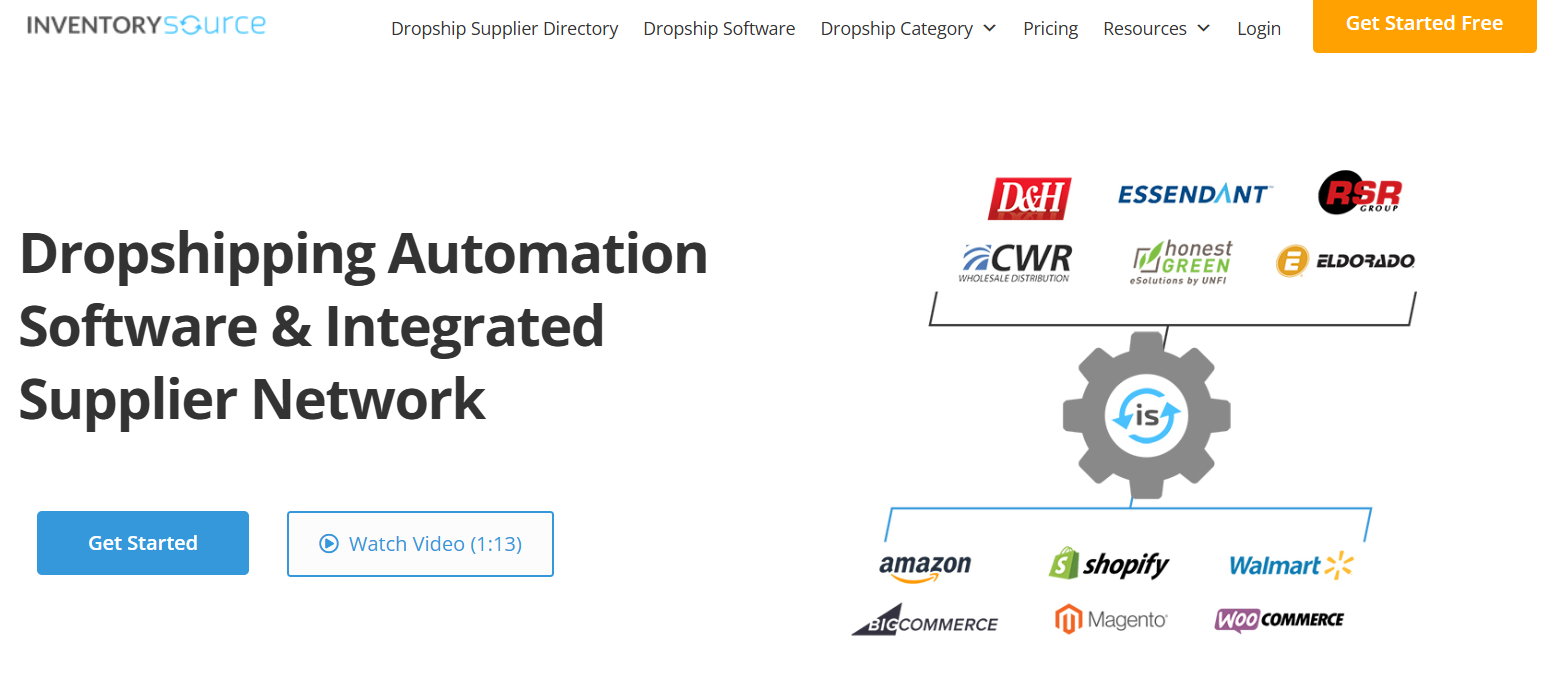
Inventory Source is a dropshipping automation platform that connects online retailers with suppliers and automates inventory, order, and product management. It is especially popular among dropshippers who want to save time and reduce manual work by automating inventory updates and order routing from suppliers.
With over 180+ supplier integrations, Inventory Source enables businesses to easily sync product data to their eCommerce store, ensuring accurate stock levels and up-to-date product details. The platform is designed for both beginners and seasoned dropshippers, allowing users to focus on growing their business rather than spending hours on manual updates.
Key Features of Inventory Source
Inventory Source is known for its robust automation features that make dropshipping easier and more efficient. Let’s explore some of the platform’s core features:
1. Supplier Directory and Integrations
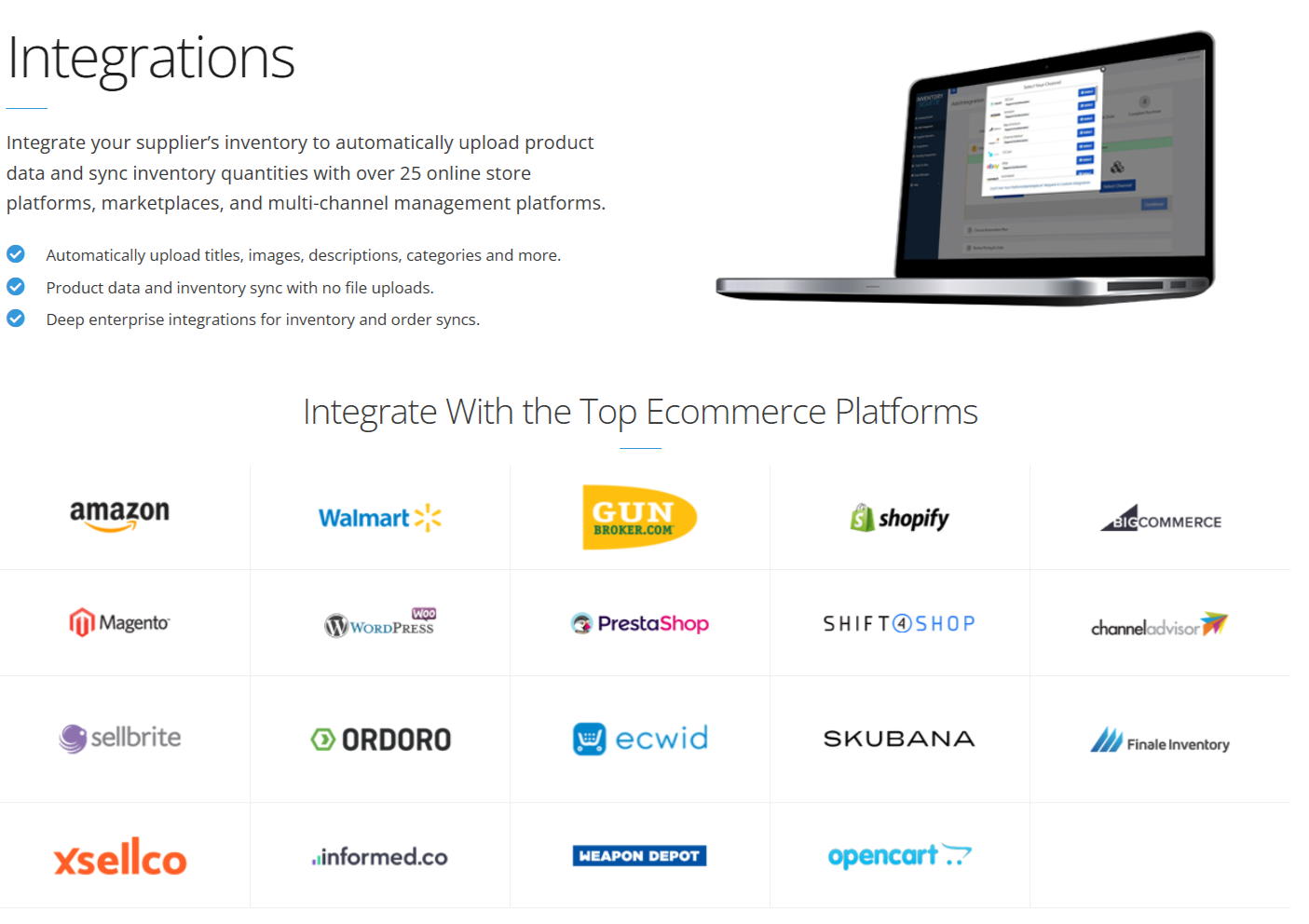
Inventory Source offers a comprehensive supplier directory with over 180 integrated suppliers. This directory allows users to view detailed information about suppliers, preview product feeds, and access contact details. For anyone new to dropshipping, the platform’s directory is an invaluable tool for discovering vetted suppliers in various niches.
Additionally, Inventory Source allows users to integrate their suppliers directly into their online store, automatically syncing products and stock levels. Integrations are available for popular eCommerce platforms like Shopify, WooCommerce, Amazon, eBay, and BigCommerce.
2. Inventory Automation
One of Inventory Source’s standout features is inventory automation, which ensures that your eCommerce store’s product listings are always up to date. Inventory Source automatically syncs your supplier’s stock data, updating inventory levels on your site. This reduces the risk of overselling and eliminates the hassle of manual inventory updates.
The platform supports two types of sync options:
- Basic Sync: Inventory and price updates are automatically synced.
- Optimized Sync: This feature is available on higher-tier plans and ensures faster updates and more efficient data syncing for large inventories.
3. Order Automation
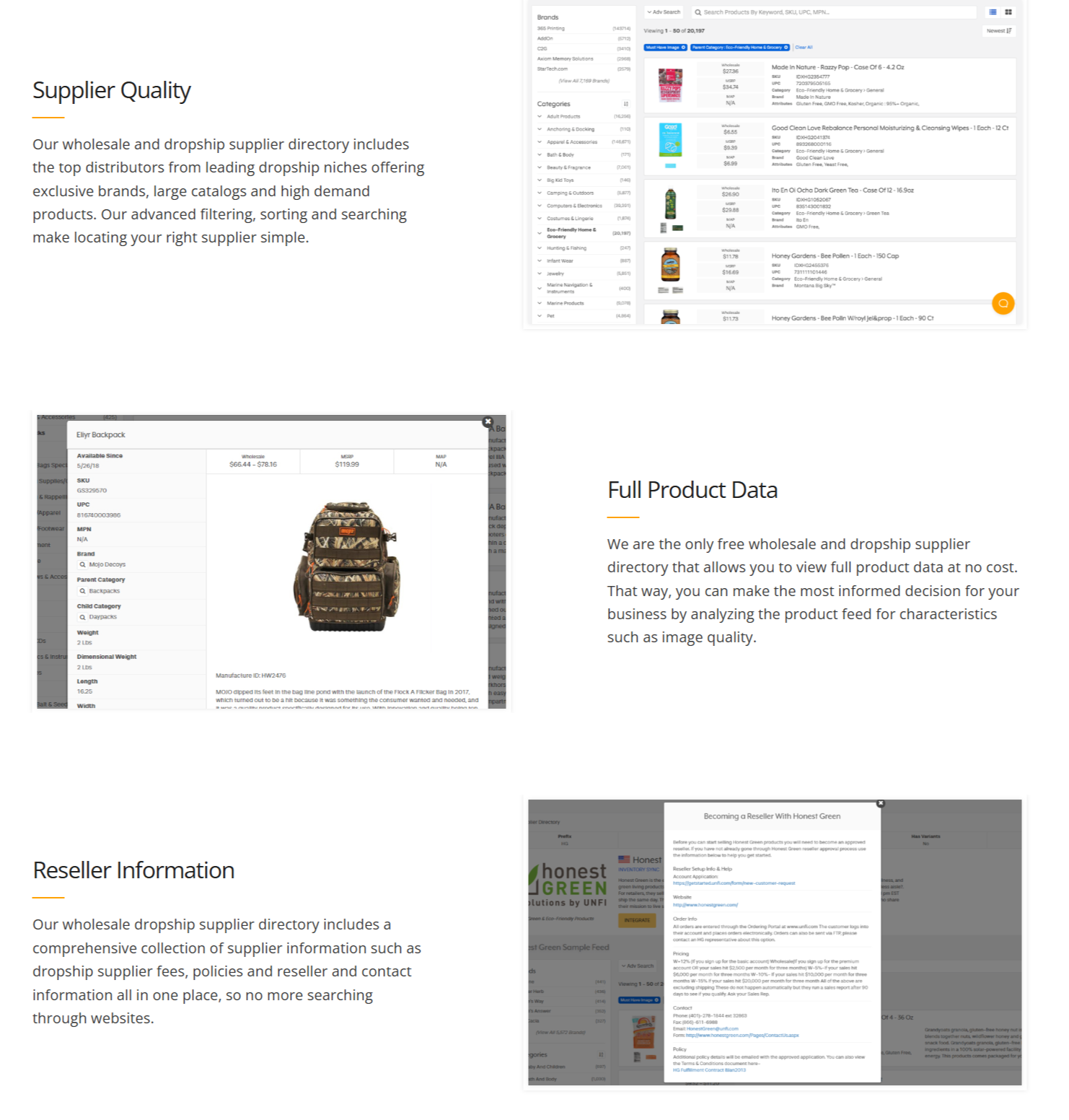
Inventory Source doesn’t just stop at inventory updates; it also offers order automation for users on higher plans. With order automation, orders placed on your eCommerce store are automatically routed to the supplier for fulfillment. This automation is ideal for high-volume dropshippers, allowing them to fulfill orders quickly and reliably.
4. SKU and Product Limit Management
Inventory Source’s pricing plans include different SKU limits, ranging from 50,000 to 500,000 SKUs, depending on your needs. This makes it a scalable solution, ideal for businesses of varying sizes. Small shops with a limited number of products can opt for a lower-tier plan, while larger businesses with extensive inventories can choose higher-tier plans with larger SKU limits.
5. Advanced Filtering and Product Categorization
Inventory Source enables users to filter and categorize products easily. This feature allows dropshippers to organize products based on specific attributes, categories, or supplier details, making it easier to manage large inventories. Advanced filtering is particularly beneficial for those with diverse product offerings who need better organization to streamline their workflow.
6. Support for Multiple Integrations
For businesses that work with multiple suppliers, Inventory Source supports multiple integrations on higher-tier plans. This allows businesses to pull products from different suppliers and synchronize them in a single store. This feature is especially valuable for dropshippers looking to diversify their offerings without creating separate stores for each supplier.
7. Reporting and Analytics
Inventory Source provides basic reporting tools that help users monitor inventory levels, sales performance, and supplier stock availability. These insights enable store owners to make data-driven decisions and optimize their product offerings. While the analytics are not as advanced as some dedicated analytics tools, they’re sufficient for most dropshipping operations.
Inventory Source Pricing Plans
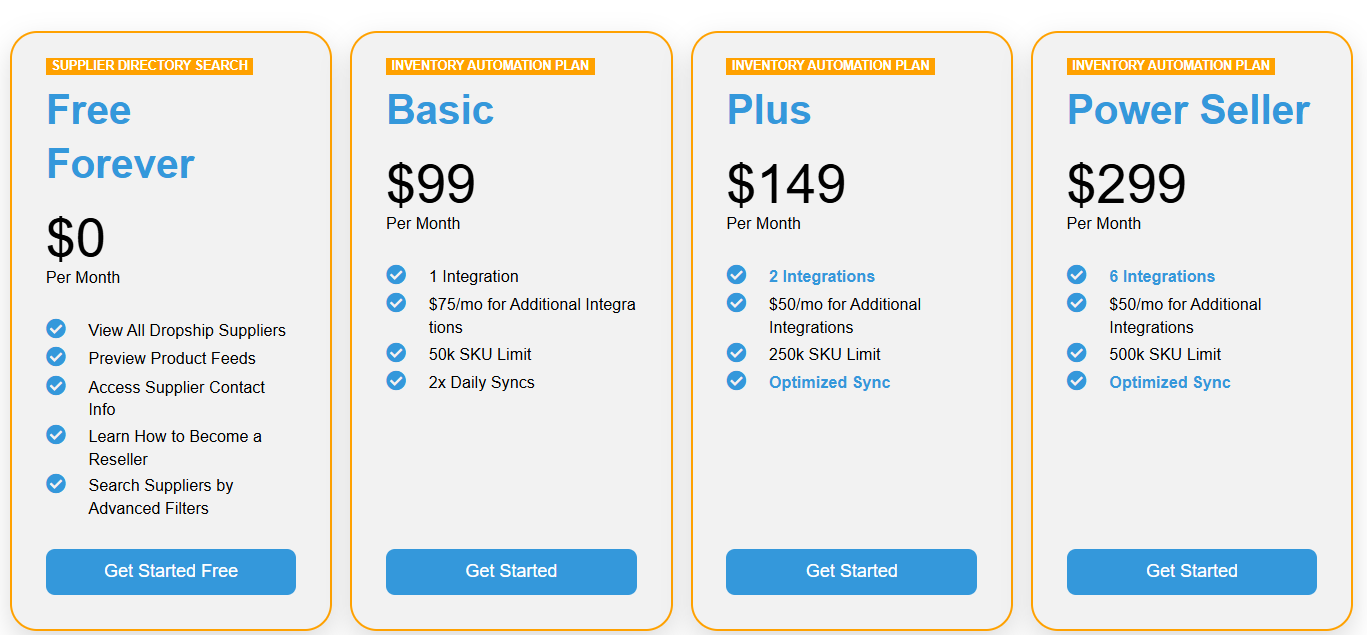
Inventory Source offers four pricing tiers, allowing users to choose a plan that best suits their business needs. Here’s a breakdown of each plan:
1. Free Forever Plan – $0 Per Month
- Features:
- Access to all dropship suppliers.
- Preview product feeds.
- Access supplier contact information.
- Learn how to become a reseller.
- Search suppliers with advanced filters.
- Ideal For: New dropshippers or those who are researching suppliers without committing to paid features.
2. Basic Plan – $99 Per Month
- Features:
- 1 integration with an eCommerce store.
- Option to add additional integrations for $75/month.
- 50,000 SKU limit.
- Basic Sync (2x daily syncs).
- Ideal For: Small stores with limited inventory needs or new businesses that require basic inventory automation.
3. Plus Plan – $149 Per Month
- Features:
- 2 integrations with eCommerce platforms.
- Option for additional integrations at $50/month.
- 250,000 SKU limit.
- Optimized Sync for faster updates.
- Ideal For: Mid-sized businesses needing faster syncs and more flexibility with integrations.
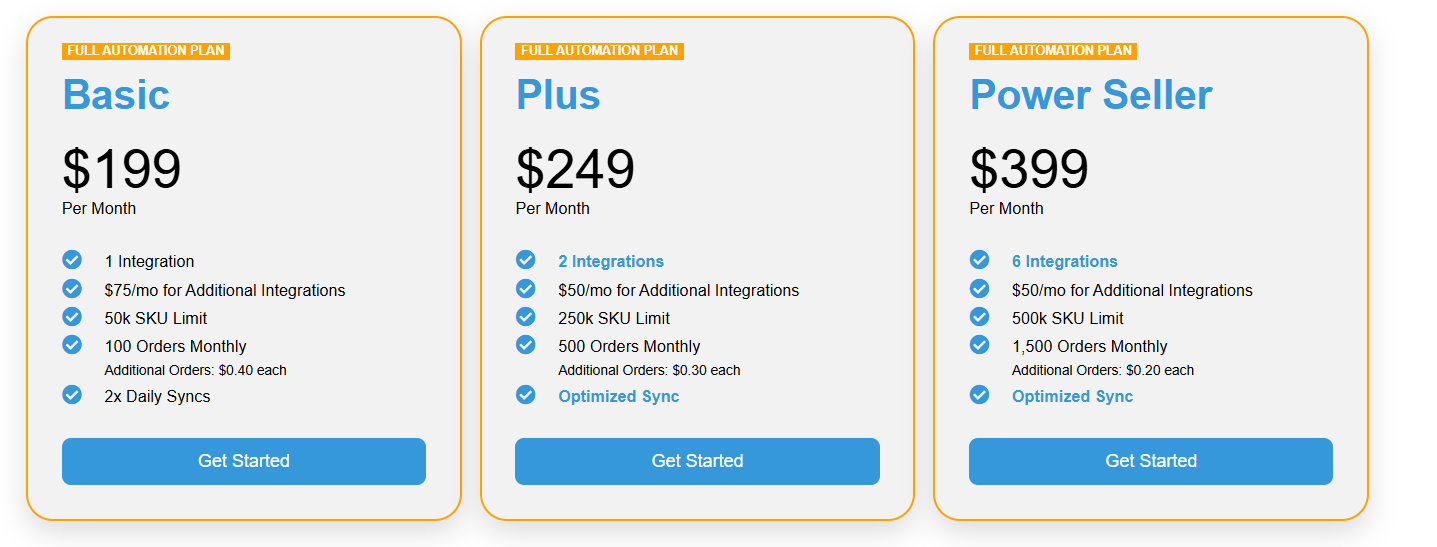
4. Power Seller Plan – $299 Per Month
- Features:
- 6 integrations, ideal for businesses with multiple suppliers.
- Additional integrations available at $50/month.
- 500,000 SKU limit.
- Optimized Sync for efficient data management.
- Ideal For: High-volume dropshippers or large-scale businesses with extensive inventory and multiple suppliers.
Each plan offers different levels of inventory automation and sync frequency, catering to dropshippers with varying needs. The Free Forever plan is a great starting point for those who want to explore suppliers before committing to an integration plan.
Pros and Cons of Using Inventory Source
| Pros | Cons |
|---|---|
| Comprehensive Supplier Directory | High Cost for Additional Integrations |
| Automated Inventory and Order Management | Basic Analytics |
| Scalable SKU Limits | Lacks Advanced Store Management Features |
| Optimized Sync Options | |
| Multiple Integrations |
Who Should Use Inventory Source?
Inventory Source is an ideal solution for various types of users within the dropshipping and eCommerce space:
- Beginner Dropshippers: The Free Forever plan provides access to a supplier directory, allowing beginners to explore suppliers and product options without upfront costs.
- Growing Dropshipping Stores: The Basic and Plus plans provide automated inventory management and order routing, ideal for stores that need to reduce manual work as they scale.
- High-Volume Sellers: The Power Seller plan offers multiple integrations and a 500,000 SKU limit, making it suitable for large businesses managing extensive inventory and complex supplier relationships.
- Multi-Platform Sellers: Dropshippers who sell across multiple eCommerce platforms can benefit from Inventory Source’s multi-integration support, allowing them to sync products across various sales channels.
Quick Links,
Final Verdict: Is Inventory Source Worth It?
Inventory Source is an excellent tool for dropshippers who want to automate inventory updates, streamline order routing, and access a large network of suppliers. The platform’s comprehensive supplier directory, coupled with its automated syncing and scalable plans, makes it a valuable asset for eCommerce businesses looking to save time and reduce manual management tasks.
However, Inventory Source may not be the best option for those looking for advanced analytics or full-featured eCommerce management tools, as it focuses primarily on inventory and supplier management. Additionally, the cost of additional integrations could add up for users who work with many suppliers.
For dropshippers and eCommerce businesses focused on efficient supplier integration and automation, Inventory Source is a reliable and robust choice. The platform’s scalability makes it suitable for everyone from beginners to high-volume sellers, providing a straightforward way to manage inventory and streamline operations.
